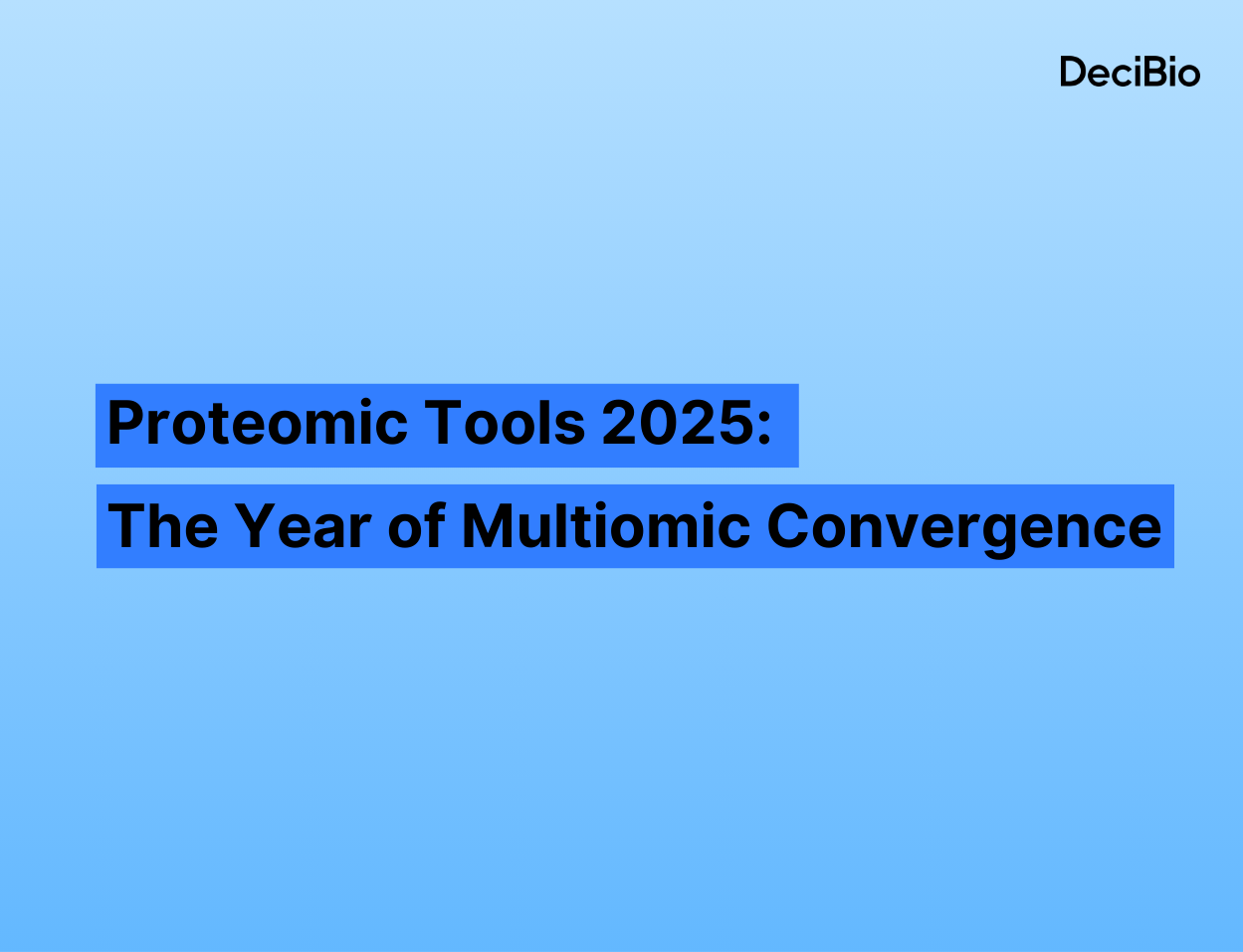Today, we published the 4th edition of our single-cell genomics report. We estimate that the global single-cell genomics manufacturer market reached $630M in 2019 and will grow at 23% p.a. to reach close to $1.5B in 2023. As the market is crossing the chasm to the early majority, it is worth taking a look back at the history of this market that has exploded in the last decade.
10X Genomics’ Rise
In the span of the last ~3 years, single-cell genomics has gone from a niche approach to an established one. This transformation has largely been driven by 10X Genomics (“10X”), who leveraged its Gel Bead-in-Emulsions (GEM) technology to offer the first commercial high throughput single-cell analysis platform. Single-cell RNA-seq (scRNA-seq) was the first application and it took off. 10X first debuted its Chromium Single Cell Controller platform via early access in March 2016 followed by a full commercial launch at ASHG later that year. Since then, 10X has generated $27M (2016), $71M (2017), $146M (2018) and $246M (2019) in revenue, a staggering 109% growth over 3 years.10X has the single-cell pioneer Fluidigm to thank. Fluidigm educated and established the market and demonstrated there was demand. Fluidigm’s C1 was the first platform to enable automated single-cell isolation (96 cells) and nucleic acid preparation based on microfluidics. In addition, Fluidigm’s solution was truly end-to-end, with the company’s Biomark instrument enabling downstream assessment of the gene expression of single cells. Since the C1 launch in Q3 of 2012, Fluidigm realized $71M (2012), $116M (2013), $114M (2014), and $104M (2015) in revenues. And then revenues collapsed; a perfect storm brewed that displaced Fluidigm as the SCG leader. The first was a shift in throughput. There was pent up demand in the market for a higher throughput solution; 96 cells wasn’t enough. While Fluidigm was aware, they were unable to address it, but 10X was, to the tune of 100,000s of cells (10k cells/channel, 8 channels/cartridge — 80k total in a single run, ~50k based on capture rate). Second, the market shifted to single-cell sequencing, quickly eliminating single-cell PCR revenues Fluidigm was generating from the Biomark. Third, Fluidigm encountered an issue with doublets, when a paper published elucidated that the doublet rate was as high as 44% on some of Fluidigm’s integrated fluidic chips (IFC), causing scientists to wonder if they’d been misinterpreting their data. While Fluidigm addressed the doublet rate, it was too little too late. The timing of these three events couldn’t have been worse for Fluidigm and any better for 10X.10X shot out of the gate, as the first high throughput option, absorbing all the pent-up demand, converting Fluidigm customers, and further expanding the market, but it hasn’t come without challenges. The first challenge was from Bio-Rad, who commercialized the ddSEQ Single-Cell Isolator in partnership with sequencing giant Illumina, announced at JPM 2017, months after 10X’s full commercial launch. Bio-Rad’s reputation and reach could’ve posed a significant threat; however, its platform was inferior to 10X’s in one key metric — capture efficiency (i.e., the number of cells captured by the system relative to the number of cells input). While 10X’s capture rate is 65%+, Bio-Rad’s is <15%, with some studies finding it as low as 3%. In addition, the ddSEQ’s throughput is somewhat limited at 1,600 cells / cartridge. In a similar time frame, the Chromium can process 80k cells. One could argue the ddSEQ’s launch was rushed. Bio-Rad’s apparent stumble out of the blocks enabled 10X to generate a further lead in the field.
Single-Cell Competition Intensifies
In the following 2 years, 6 additional platforms were commercialized:
- InDrop – 1CellBio
- Rhapsody – BD
- Tapestri – Mission Bio
- Nadia – Dolomite Bio
- ICELL8 cx System (Relaunch of WaferGen’s ICELL8)
- Genesis – Celsee

Each of these competitors has taken a slightly different angle, avoiding direct competition with 10X, to a degree. The ICELL8, originally developed and marketed by WaferGen, was the first to commercialize a platform after Fluidigm, right as the market was shifting to high throughput. WaferGen’s 5,184 nanowell chip, enabling isolation of thousands of cells, comes in an order of magnitude lower than the majority of the market’s need. Takara Bio acquired WaferGen in 2017 (~$36M) for ICELL8 to build on its low-input sample preparation technologies, ideal for single-cell analysis. Takara relaunched the ICELL8 cx Single-Cell System with similar capabilities, a modular system including imaging. The platform’s key differentiating feature is the ability to assess full-length mRNA using the Smart-seq2 approach. While differentiating, the limited throughput has created a barrier to adoption. 1CellBio and Dolomite Bio have gone after flexibility, maintaining the key features of the technologies they are based on, inDrop and Drop-Seq, respectively. The added experimental flexibility allows researchers to develop their own protocols. Both platforms require a greater level of technical expertise than other platforms, which could gate adoption by the early and late majority customers who likely prefer turnkey solutions. BD initially pursued targeted RNA-seq, which reduces the costs of sequencing, a key moderator of single-cell adoption. However, because the field was still in a discovery phase at the time of Rhapsody’s launch, the platform struggled (and will continue to struggle in the short-term) to displace whole transcriptome assessment as the preferred approach. BD’s reputation, reach, and flow cytometry customer base hasn’t had the impact on Rhapsody adoption as we anticipated. This likely indicates a fundamental difference and lack of overlap in the flow and single-cell genomics customer types. The former has primarily been focused on proteins. While the Rhapsody has gained limited traction, BD still generates revenues from researchers that leverage flow cytometry to isolate single cells into 96-well plates. Our primary research indicates this approach is more widespread than appreciated. BD may be better positioned with its multiomics offering, AbSeq, as current customers focused on proteomics start to incorporate more genomic characterization.Mission Bio is well positioned, with a platform offering targeted DNA (co-occurrence of SNVs and CNVs), and more recently multiomics (i.e., DNA and protein), features that 10X does not. Targeted DNA is well suited for translational oncology applications, an area that has not been a primary focus for 10X. Mission Bio has been purposeful in targeting this application, launching with targeted panels in AML, a niche from which the company can expand. One can imagine a number of applications that could leverage genotype and phenotype characterization (e.g., CRISPR screens, cell and gene therapy QC). Celsee, the most recent to commercialize a high throughput platform, has pivoted a few times, initially offering lower throughput methods for CTC capture. The company’s new platform, Genesis, now has dual capabilities, with interchangeable slides to either isolate rare cells and CTCs, or many cells (10,000s). For the high throughput options, a gentle gravity-based approach is leveraged to capture cells in the 100k or 250k slide format, enabling ~10k or 25k cells to be isolated. Celsee is positioning itself as differentiated solution for single cell analysis. given the unique dual capability feature. Last week, Bio-Rad announced it acquired Celsee for an undisclosed amount. This move makes sense for both parties. Bio-Rad’s resources, reputation, and channels should allow Celsee to scale, and instead of improving its current platform, Bio-Rad acquired one, significantly improving its competitive position. Despite some competitor platforms having unique and differentiating features, our primary research over the last few years indicates that no other competitor has gained significant traction yet, except Mission Bio, who has developed a strong reputation with translational AML customers. However, with the acquisition, Celsee could be the next platform to do so.Despite the competition, 10X has maintained a healthy lead (>1,666 instrument placements) and is not resting on its laurels. Despite its growing size, 10X continues to remain agile, responding to market demand by adding new single-cell applications (e.g., ATAC-seq, V(D)J, CITE-seq), and acquiring companies to continue driving innovation (e.g., Epinomics, Spatial Transcriptomics). 10X’s robust technology, R&D resources, and willingness to develop new products that address market needs have allowed the company to maintain its pole position. Over the next few years, 10X plans to offer targeted sequencing and enable sample pooling to reduce costs in addition to increasing throughput capability (1M – 10M cells) to address a broader set of market needs. As a result, 10X is expected to continue its strong growth trajectory while building an ecosystem of platforms and applications that will establish a formidable competitive moat. 10X issued guidance of $71-72M in revenue for Q1 2020 and a full year guidance of $350-$360M, which it went onto withdraw given the current uncertainty surrounding the coronavirus pandemic, discussed in more detail below.
10X’s Future Challenges
One of the biggest issues 10X will face is deciding how to dedicate its resources and prioritize applications to pursue. 10X recently launched Visium, its spatial gene expression solution (doesn’t currently have single-cell resolution). While this is an extremely hot market, in which 10X is well positioned, execution in this market without impacting the rest of the single-cell business will require an increase or redistribution of resources. The breadth of application opportunities will continue to expand and 10X cannot address them all. This will leave openings for competitors to gain traction. Part of what’s limiting traction for some companies is scale (e.g., 1CellBio, Celsee, Dolomite Bio, Mission Bio), which could change quickly if a large player, looking to enter the market or bolster its current position, decided to partner or acquire one of them. Celsee was the first to get acquired and others could follow.The second issue is litigation, which has already cost 10X ~$55M for infringement of certain Bio-Rad patents and $25M to cross-license patents with BD. 10X developed its next GEM approach to circumvent the Bio-Rad infringement and avoid continued 15% royalty on legacy GEM products, but was promptly sued again by Bio-Rad, regarding Next GEM products, on the day before 10X was set to IPO. The litigation news didn’t seem to matter, as 10X (NASDAQ: TXG) raised upwards of $350M the next day. Priced at $39/share, the stock closed at $52.75 on its opening day. On January 29th, 10X reached a 52-week high of a whopping $108.36 before the market went into a downward spiral due to coronavirus fears. TXG’s stock is currently hovering at ~$65. In a market where there’s money to be made, litigation is often rampant. 10X has also sued Bio-Rad, 1CellBio, and Celsee. Bio-Rad’s acquisition of Celsee further complicates the situation.The third issue is customer sentiment. Our primary research suggests users consider the Chromium a robust box that delivers good results, assuming the starting cells are good quality. However, the common complaint is the cost, with users spending thousands per experiment, including sequencing. The other dynamic mirrors that of the sequencing market, where Illumina is the dominant force, with a closed system, and high margins (70%+). This combination tends to sour customer sentiment over time, leaving the market clamoring for alternatives; while sequencing customers have limited options, single-cell analysis customers do not. Again, an opportunity for competitors to gain traction.A recent unforeseen challenge that will impact 10X and others is the fall-out from coronavirus. The global and U.S. death tolls surpassed 100,000 and 20,000, respectively, in early April1. In efforts to prevent the spread of the virus, states across the U.S. have implemented stay-at-home mandates (42/50 as of early April2), that have been in place approaching a month in some cases. As a result, labs across the country have shut down, bringing non-COVID-19 related research to a grinding halt. It remains unclear how long these mandates will last and the scale of the impact on these businesses. In a recent statement, 10X noted it saw a “significant reduction in customer activity other than research related to the coronavirus.” The statement went on to say “10x is currently unable to reasonably estimate its financial performance and is withdrawing its previously announced annual revenue guidance ($350-$360M) for 2020.” Several other companies have done the same. One bright spot during this tough time is the rate at which companies like 10X, Bio-Rad, and others have sprung to action to support the research in response to the coronavirus pandemic.
Illumina Dominates Downstream Single-Cell Analysis Market
While competitors in the sample isolation and preparation market segment prepare to duke it out, Illumina has enjoyed little to no competition in the downstream analysis market segment. Illumina is the biggest indirect beneficiary of single-cell genomics as the field continues to conduct sequencing downstream of most single-cell experiments. Our research indicates a wide range in spend on sequencing, anywhere from a third to 5+ times spent on sequencing relative to spend on sample preparation. On average, Illumina likely realizes $0.80-$1 for every dollar spent on sample preparation for single-cell sequencing. While the dropping cost of sequencing will put downward pressure on single-cell revenue, this will be offset by increasing adoption. Although single cell revenues comprise a fraction of Illumina’s revenues, the company recognizes the growth opportunity as it has positioned single-cell as a key application for its recently announced NextSeq 1000 & 2000 platforms. Single-cell could act as a driver for continued decentralization of Illumina’s platforms and vice versa. Of note, potential competition could come from long read technologies that are being leveraged as an alternative downstream sequencing approach, although still niche. Long read approaches (e.g., Oxford Nanopore Technologies, PacBio) will increase as the significance of genomic variants that are better assessed by long reads increases (e.g., structural variants).
Single-Cell Analysis to Evolve Beyond Characterization
From a scientific perspective, the field is still in an exploratory phase, as researchers continue to use scRNA-seq to characterize cells. Ongoing efforts from the Human Cell Atlas will continue this trend. While we anticipated the exploratory phase could last 3-5 years, it will likely last longer as researchers can now characterize cells with added multiomic analytes (e.g., DNA + protein, RNA + ATAC). In the short term, we expect multiomics to be a key driver of growth, moderated by the speed at which informatics solutions are developed to address the complexity of multiomics data. We anticipate a subset of the market will shift from broader characterization to deeper analysis in subsets of cells, opening the door for increased targeted RNA-seq and full-length mRNA assessment. In the mid- to long term, we view functional analysis as the next phase of single cell. Companies like Berkeley Lights and Isoplexis have already gained strong interest. While these single-cell functional companies have been focused on proteins, Berkeley Lights recently added transcriptomic capabilities that allows its users to characterize the genotype of functionally relevant cells (i.e., genotype and phenotype tied). We expect to see more of this and anticipate a complementary relationship between broader single-cell characterization and single-cell functional analysis in the short-term.We see a number of additional drivers and moderators for the field:
Key Drivers
- Increasing commercial availability of new applications including multiomics (e.g., ATAC-seq, CITE-seq) and functional assays
- 10X Genomics driving additional applications on large and growing install base
- Large-scale, well-funded initiatives, like the Human Cell Atlas
- Pharma interest in single-cell methods to boost drug discovery (e.g., Takeda, Kite Pharma, and Janssen all have a partnership with single-cell companies)
- New instruments (e.g., S2 Genomics’ Singluator) that can automate and optimize the solid tissue to cells/nuclei suspension preparation, feeding high-throughput machines
Key Moderators
- Challenges in data analysis and data integration as the interest in single-cell multiomics grows
- High sequencing cost relative to prior analytical technologies
- Lack of sensitivity as whole transcriptome approaches only capture a portion of the total expressed genes
- Limited short-term clinical applications
For an in-depth analysis of the SCG market, see DeciBio’s updated Single Cell Genomics report, with detailed information on market size, segmentation, growth, competition, and trends. If you are interested in discussing recent events in the single cell genomics field or interested in hearing more about our strategy consulting capabilities, feel free to send Miguel an email.
References
- Coronavirus COVID-19 Global Cases by the Center for Systems Science and Engineering (CSSE) at Johns Hopkins University (JHU)
- Axios.com
- Company websites, earnings calls, and investor presentations
- DeciBio primary research

Miguel Edwards is a Senior Project Leader at DeciBio, with 5 years of strategy consulting experience. Miguel has worked on several engagements identifying industry trends in the life-science research tools and clinical diagnostics spaces. Miguel has extensively researched the market for novel, disruptive diagnostic technologies, including digital biomarkers, liquid biopsies, multi-omics, and single-cell platforms. Miguel has conducted >100 interviews with single-cell researchers and KOLs for strategy consulting cases. Connect with Miguel on LinkedIn today.
Disclaimer: Companies listed above may be DeciBio clients and/or customers





.png)


